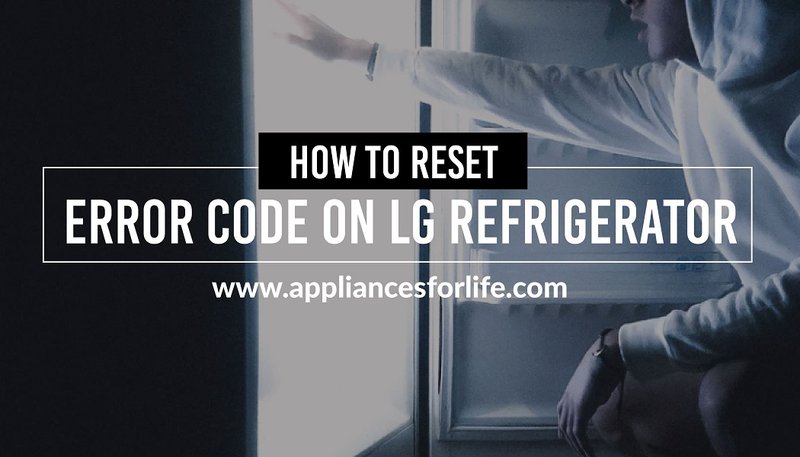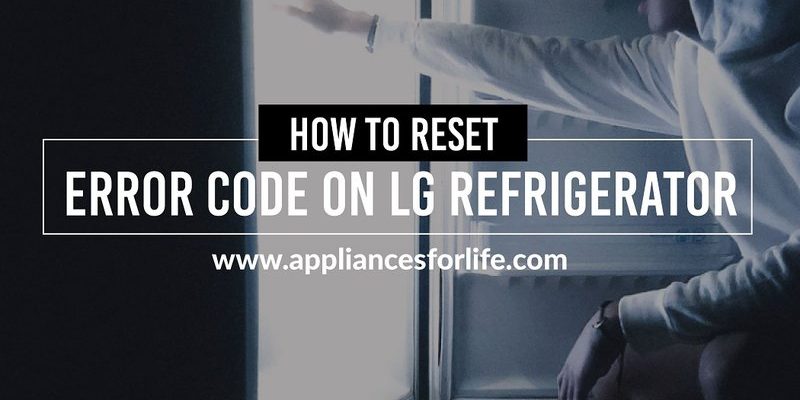
The OE error code on an LG refrigerator is a bit of a show-stopper. It’s like your fridge is saying, “Help! I’ve got a clog!” What it really means is that there’s a problem with the drainage system. Water isn’t draining as it should, and when this happens, your refrigerator’s performance can take a hit. But don’t worry—resetting your LG refrigerator after an error code OE is a handy task anyone can tackle with a bit of patience and guidance. Let’s dive deep into unraveling this mystery and restoring harmony to your kitchen.
Understanding the OE Error Code
So, what exactly triggers an OE error code on your LG refrigerator? This error is essentially your refrigerator’s way of waving a red flag that there’s a drainage issue at play. Think of it as your fridge trying to communicate by saying, “There’s water and it’s not going where it’s supposed to.” This can be due to a clogged or frozen drain line, a kink in the drainage tubing, or even a faulty drain pump. Imagine having a garden hose with a kink—water just can’t flow through as it should.
The tricky part is that, unlike the garden hose, the problem isn’t always visible. This can lead some to panic, but don’t worry! It’s important to understand that the OE error isn’t the end of your refrigerator’s world. It’s just a little bump in the road. If left unaddressed, accumulated water can lead to leaks or even spoilage of your food. But with some simple checks and actions, you can resolve this error without much hassle.
When faced with this issue, the first step is to ensure the drain isn’t blocked. Often, debris or ice buildup can obstruct the drain hole. This is a pretty common cause and, thankfully, an easy fix. Start by emptying your fridge to access the drain area, usually located at the back bottom of the fridge section. Check for any visible blockages, clearing out any debris gently. In case of ice buildup, you might need to let it defrost.
Resetting Your LG Refrigerator
Once you’ve identified and addressed the blockage, it’s time for a reset. Think of this as giving your refrigerator a gentle nudge back in the right direction after a little stumble. Unplug your refrigerator from the power source. If you’ve ever restarted a computer, you know the power of a simple reboot. This is pretty similar, allowing the system to refresh and reset error codes.
Leave it unplugged for about 10 to 15 minutes. During this time, you might want to clean around the area, check that everything else is in place, or even just sit back with a cup of coffee. Once sufficient “unplugged” time has passed, plug the refrigerator back in. You should see any error codes disappear, indicating a successful reset. It’s like waving a magic wand and watching everything fall back into place.
If the error persists after this step, don’t fret. Sometimes additional professional intervention might be required, such as replacing a faulty component like the drain pump. But for most cases, a simple reset, after addressing the drainage issue, does the trick.
Preventative Measures to Avoid Future OE Errors
As they say, “prevention is better than cure,” and this couldn’t be truer for avoiding future OE errors. Regular maintenance and checks can save you time and trouble down the line. Treat your refrigerator just like you’d maintain your car—routine checks keep everything running smoothly.
Start by periodically inspecting the drainage area of your refrigerator. It may sound mundane, but cleaning the drain hole and surrounding areas can prevent blockages. Make it a point to check every few months or during any major kitchen clean-ups. This proactive approach can catch potential problems before they escalate into error codes.
Also, be mindful of what goes into your refrigerator. Spills and leaks (hello, overfilled juice jug!) can contribute to drainage problems. Ensure containers are sealed and check for any leaks. If your fridge is located in a colder environment, keep an eye out for ice buildup, particularly around the drainage hole. Taking these small steps can make a big difference in keeping that OE code at bay.
Troubleshooting Tips and When to Seek Help
You’ve tried everything, and the error code still nags at you like a persistent itch. When is it time to throw up your hands and call in the experts? While many issues can be resolved with a DIY approach, sometimes professional repair service is the best course of action. Persistent errors or recurring drainage problems might signify something more complex—a faulty component, perhaps.
Before reaching that point, ensure that all checks and resets have been carefully executed. If you’re still facing issues, contacting LG customer service or a trusted appliance repair technician is your next best move. They can provide the detailed diagnostics and repairs needed to get your refrigerator back in peak condition.
In conclusion, facing an OE error code on your LG refrigerator isn’t fun, but it’s definitely manageable. By understanding the causes, performing a reset, and instituting regular maintenance, you can keep your refrigerator running smoothly for years to come. Remember, even if all else fails, help is just a call away. Your trusty kitchen sidekick will be back to doing what it does best in no time!
